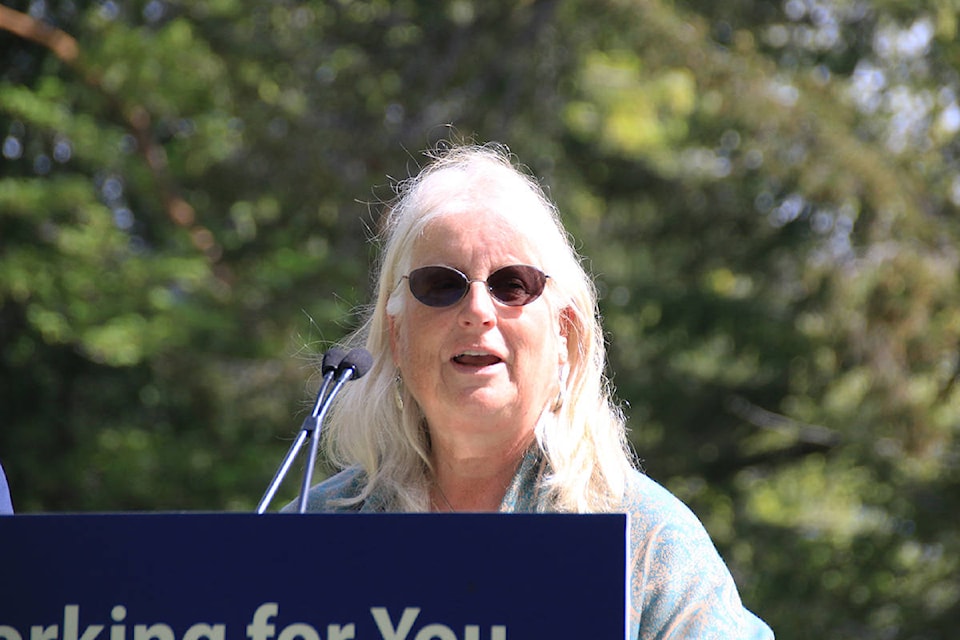The Cowichan Valley Arts Council is organizing the Watershed Show: Through the Lens of Art starting August 27. In the weeks before the show, these columns will highlight people and activities that reflect the goals of the Cowichan Watershed Board. This week: education.
Soon after the pandemic upended daily lives for many people last year, Genevieve Singleton started posting a message on Facebook every day. Not the usual family updates or look-at-what-I-ate-for-dinner photos you might expect see on social media. Instead, she uses her page to draw attention to the natural world in the Cowichan Valley.
As a biologist with degrees in science and education, she knows both the Latin and the common names for many plants and animals. But what makes her Facebook page special is that her commentary includes names in the Coast Salish Hul’q’umi’num’ language. The page, called Quw’utsun Nature Rambles, is a trove of photos and reflections on the natural world in the Valley. One day there was a photo of a blue porcelain crab, complete with a size comparison to Tth’uma’yu, (the Hul’q’umi’num’ word for acorn barnacle). Her comments mention the enormous claws used for territorial challenges, and which are flattened to adapt to live under rocks. Another day her topic is a discussion of the salal bushes now in flower along the Quw’utsun Sta’lo (Cowichan River). T’eqe’ is the Hul’q’umi’num’ word for salal (Galtherua shallon in Latin). She mentions the berries have been harvested and dried into cakes for thousands of years, and she freezes them to add to fruit crumbles and to stuff salmon. Another day she posts a video of a baby Sqi’mukw (octopus) or marvels at the small stand of Qw’i’qw’iyulushulhp, Hul’q’umi’num’ for trembling aspen (Populus tremuloides). Note oval shaped leaves, white bark. She posts, “Every tree is my favorite, but there is something especially spectacular about Qw’i’qw’iyulushulhp shimmering in a breeze. The leaves flutter due to the leaf stalks being flat. Did you know Qw’i’qw’iyulushulhp reproduces not only by seed but also by cloning? There is a forest of over 100 acres in Utah all with the same genetic markers, making it one of the largest organisms in the world.”
There is an art to her science lessons, although Genevieve says she isn’t an artist. Instead she calls herself a nature interpreter by trade, having started working with BC Parks about 40 years ago. She wants to intrigue people enough to bring them in and engage them, calling her work “spirit-based” referring to her respectful Quaker values. “My passion is sharing the knowledge with others,” she says. That desire earned her the volunteer of the year award from BC Parks in 2016.
The Facebook natural history tidbits are only a small part of her activities now. For the BC Wildlife Federation she and husband Dave Polster, a landscape ecologist, are teaching the employees — part of the wetlands workforce — techniques for restoration. With Cowichan Tribes, she is helping create signs for the Somenos Marsh walkways. She continues to study the Hul’q’umi’num’ language with Cowichan elders, and she co-chairs the Cowichan Stewardship Roundtable, a monthly forum to bring together people doing environmental work locally.
She believes the simple act of renaming something can have an impact, shifting the way we think about the place we live. “We brought up our family with the concept of reconciliation,” says Singleton. “A piece I could bring forward is naming.”
Susan Down is the managing director of the Cowichan Valley Arts Council.
